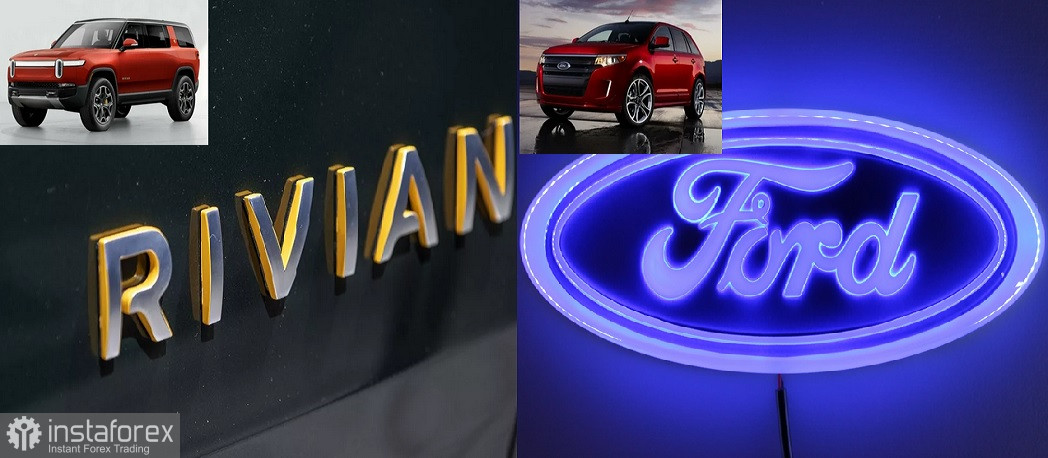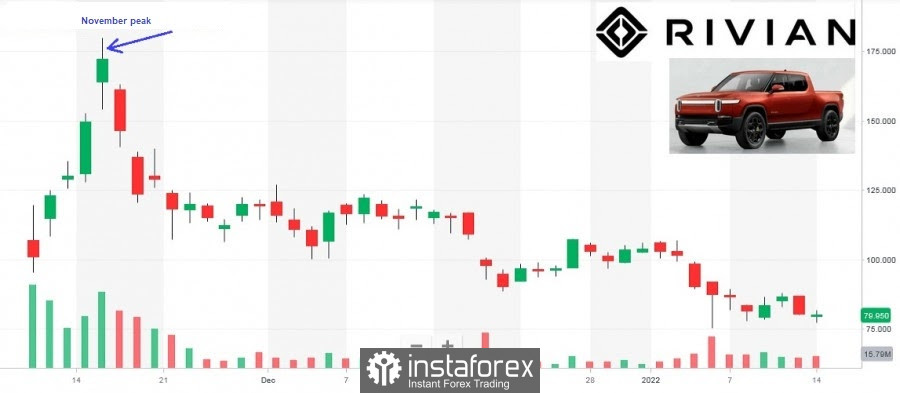
Ford Motor Company invested $500 million for the production of electric trucks startup Rivian Automotive. In connection with the investment, Ford has announced plans to build an electric vehicle (EV) based on the Rivian automotive platform.
As a financial investment, Rivian's share generated huge profits for Ford. However, the strategic aspect of the investment has fallen apart as the two companies no longer plan to collaborate on vehicle development. Since Rivian shares are trading at a very high price, even after a sharp pullback from their November peak, Ford should try to sell its Rivian shares in 2022.
Before the pandemic, Ford planned to build a Lincoln-branded crossover on the Rivian platform, complementing electric vehicles that were supposed to be developed entirely in-house. However, this project was canceled in April 2020. But then, both companies announced that they would develop another Ford car on the Rivian platform.
Unfortunately, Ford and Rivian acknowledged last November shortly after Rivian's IPO, that they no longer had plans to collaborate on vehicle development or platform sharing. Instead, companies will focus on their individual EV product roadmaps. The change removes the strategic aspect of Ford's investment in Rivian shares.
Following the cancellation of Ford's plans to collaborate with Rivian on electric vehicle development, CEO Jim Farley said that Ford remains optimistic about Rivian's future and wants to keep investing in its budding competitor.

Rivian's sole plant has an annual production capacity of 150,000 units, but the company is currently expanding it to 200,000. Last December, Rivian selected a site in Georgia to build a second plant with an annual production capacity of 400,000 vehicles. However, production there will not begin until 2024. Until both plants are operating at almost full capacity, Rivian will probably spend money year after year.
As for the future prospects, Rivian's founder and CEO RJ Scaringe said that the company aims to achieve an annual production of at least 1 million units by 2030. That's not much by automotive industry standards. The fierce competition in the EV market is likely to limit Rivian's free cash flow potential unless it can go well beyond the 1 million vehicles per year level.
While it will take years for Rivian to scale up its production, Ford aims to produce 600,000 electric vehicles annually by the end of 2023. The in-demand Mustang Mach-E and F-150 Lightning will account for more than half of that production. From there, production will continue to grow.
Ford is on its way to building a large-scale electric vehicle business much earlier than Rivian. The legendary automaker's historic business continues to generate cash. Last year, free cash flow was approximately $4 billion to $5 billion.

It is entirely possible that Rivian's market capitalization will exceed $70 billion over the next decade, and this is more likely than two months ago when Rivian's market capitalization exceeded $150 billion. But the company has to struggle from time to time, and there is no guarantee that Rivian will be able to achieve great success in the pickup truck market, where brand loyalty remains extremely strong.
 English
English 
 Русский
Русский Bahasa Indonesia
Bahasa Indonesia Bahasa Malay
Bahasa Malay ไทย
ไทย Español
Español Deutsch
Deutsch Български
Български Français
Français Tiếng Việt
Tiếng Việt 中文
中文 বাংলা
বাংলা हिन्दी
हिन्दी Čeština
Čeština Українська
Українська Română
Română

